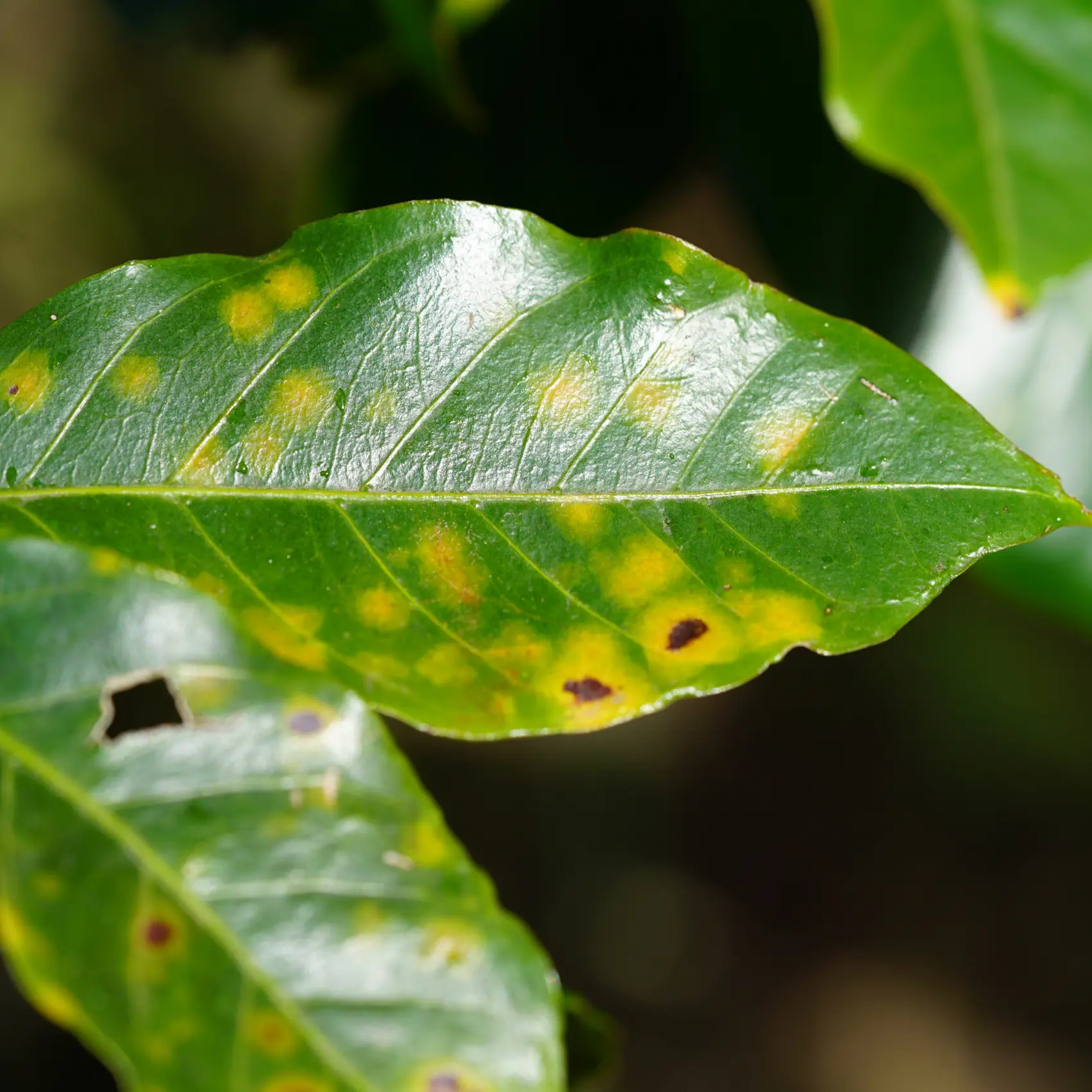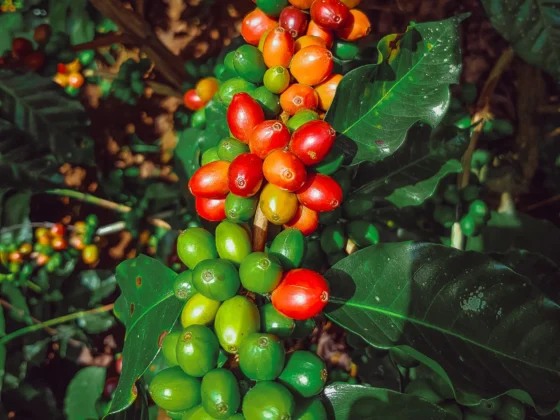Coffee rust, a formidable fungal disease, presents an ongoing challenge to the global coffee industry. This comprehensive guide delves into the various aspects of this rust, including its prevention, treatment, and the profound impact it has on coffee cultivation and trade. We explore traditional and modern prevention methods, from chemical treatments to sustainable farming practices, and examine the innovative treatments being developed to combat this persistent threat. Additionally, the guide highlights the significant economic and environmental effects of this fungal disease, as well as the future prospects in fighting it, including research initiatives and the role of climate change. Collaborative efforts within the coffee industry are also emphasized as a critical component in managing and mitigating the impact of this rust. This article serves as an informative resource for understanding the complexities of this fungal disease and the multifaceted approaches required to address it effectively.
Give your eyes a break – click below to listen to the article.
- Introduction & Key Takeaway
- https://app.mysoundwise.com/tracks/17005751913463821e.mp3
- What is Coffee Rust?
- https://app.mysoundwise.com/tracks/17005752303964263e.mp3
- The Impact of Coffee Rust on the Industry
- https://app.mysoundwise.com/tracks/17005752777021997e.mp3
- Understanding Coffee Rust Prevention
- https://app.mysoundwise.com/tracks/17005753230556567e.mp3
- Future Prospects in Fighting Coffee Rust
- https://app.mysoundwise.com/tracks/17005753575037922e.mp3
- Conclusion & FAQs
- https://app.mysoundwise.com/tracks/17005753959603250e.mp3
Coffee Leaf Rust: Key Takeaway
- Understanding Coffee Rust: This fungal disease, caused by Hemileia vastatrix, significantly impacts coffee production and the global market, leading to considerable economic losses in the coffee industry.
- Preventive Measures: Effective prevention includes a range of strategies like appropriate fertilization, moisture control, and cautious use of fungicides, aiming to enhance plant health and resilience.
- Advanced Treatment Methods: Beyond traditional methods, newer approaches such as developing rust-resistant coffee varieties are gaining prominence in combating this disease.
- Emphasis on Sustainability: Sustainable and organic farming practices are vital in managing coffee rust, offering benefits that extend beyond disease control to overall ecosystem health.
- Importance of Collaborative Efforts: The future of this rust management relies on research, understanding the effects of climate change, and collaboration across the coffee industry, highlighting the need for shared knowledge and resources.
What is Coffee Rust?
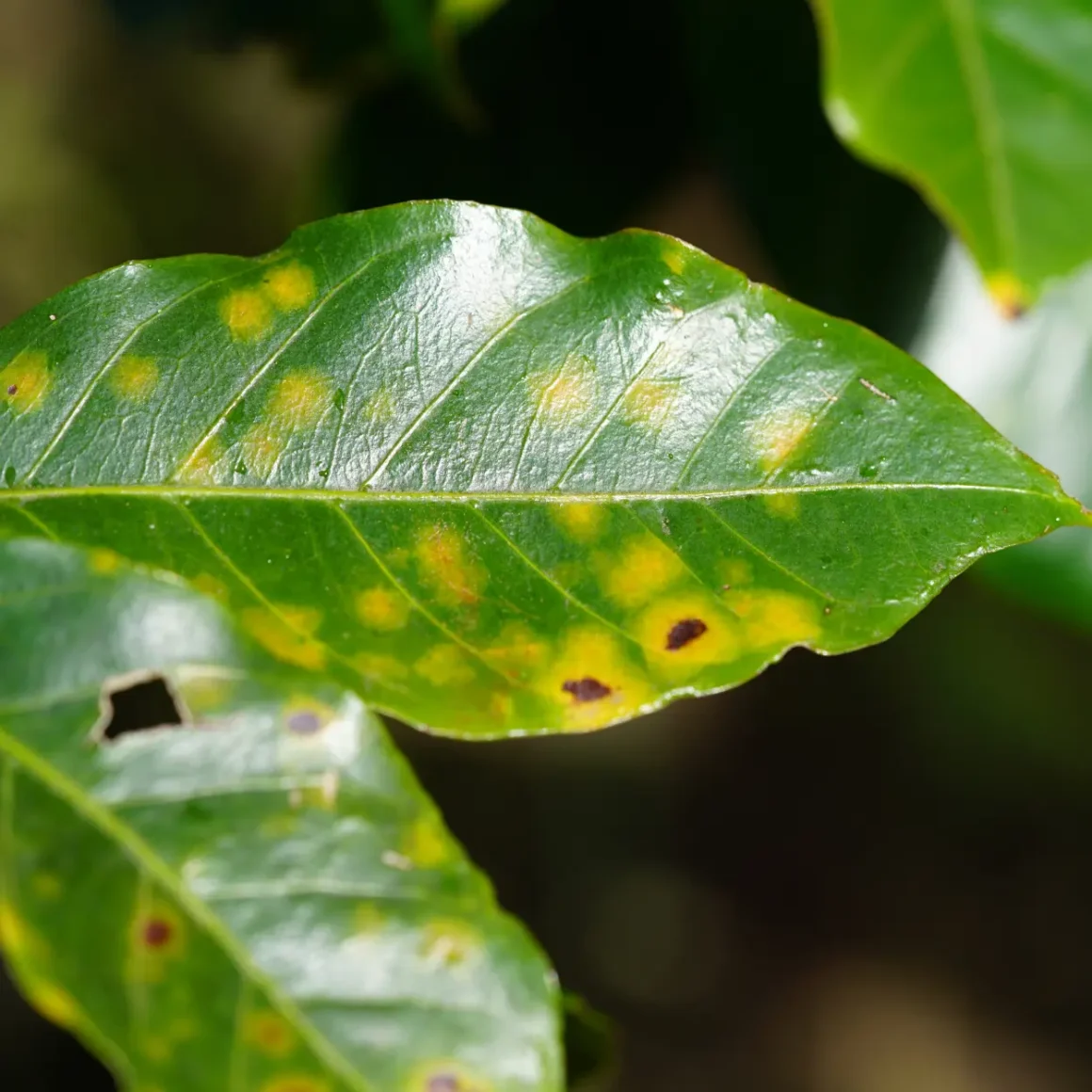
Coffee rust, scientifically known as Hemileia vastatrix, is a significant agricultural concern, particularly affecting coffee farms. This fungal disease, primarily targeting coffee plants, poses a serious threat to both the quality and quantity of coffee production worldwide. (1)
The Basics of Coffee Rust
Coffee rust, a detrimental fungal infection, primarily affects coffee plants, leading to decreased harvests and significant economic impacts. The fungus manifests as yellow-brown spots on leaves, eventually causing a reddish-orange, dust-like appearance.
- Scientific Classification: It’s known as the Hemileia vastatrix in the scientific community.
- Development: The fungus degrades coffee plant leaves, causing them to detach and fall, which in turn diminishes both the quality and quantity of coffee fruits.
- Impact: If untreated, it can lead to the death of the plant. Its presence has been a cause of major epidemics in coffee farms, especially in financially constrained regions.
This fungus has proven to be a resilient adversary, often developing resistance to fungicides, leading to substantial losses even in well-established coffee-producing countries.
Coffee Rust Lifecycle
Understanding the lifecycle of this fungal infection is crucial for effective management and control strategies.
- Germination: The life cycle begins with the germination of uredospores.
- Infection: These spores primarily infect the leaves, rarely affecting young stems or fruits. The infection process is completed within 24–48 hours. (2)
- Sporulation: Post-infection, the leaf blade is colonized, and sporulation occurs through stomata, releasing numerous spores over several months.
The absence of a known alternate host for Hemileia vastatrix adds to the complexity of its life cycle, with hypotheses suggesting possible cryptosexual reproduction.
Symptoms of Coffee Rust
The early identification of this rust is essential for controlling its spread and mitigating its impacts.
- Initial Indicators: The initial signs manifest as tiny, light yellow spots appearing on the upper leaf surfaces. (3)
- Progression: As the infection progresses, orange urediniospores become visible on the undersides of the leaves, resulting in the development of powdery lesions that exhibit a range of colors from orange-yellow to red-orange.
- Leaf Damage: Affected leaves ultimately fall prematurely, causing a substantial adverse effect on the overall health and productivity of the coffee plant.
The disease tends to progress upward from the lowermost leaves, with infection sites concentrated where moisture accumulates. Early detection and intervention are key in managing the symptoms of coffee leaf rust and preventing widespread damage.
The Impact of Coffee Rust on the Industry
The coffee industry, a critical sector in the global economy, faces significant challenges due to the spread of this fungal disease. This rust not only affects the health of the coffee plants but also has far-reaching consequences for the industry as a whole.
Economic Consequences
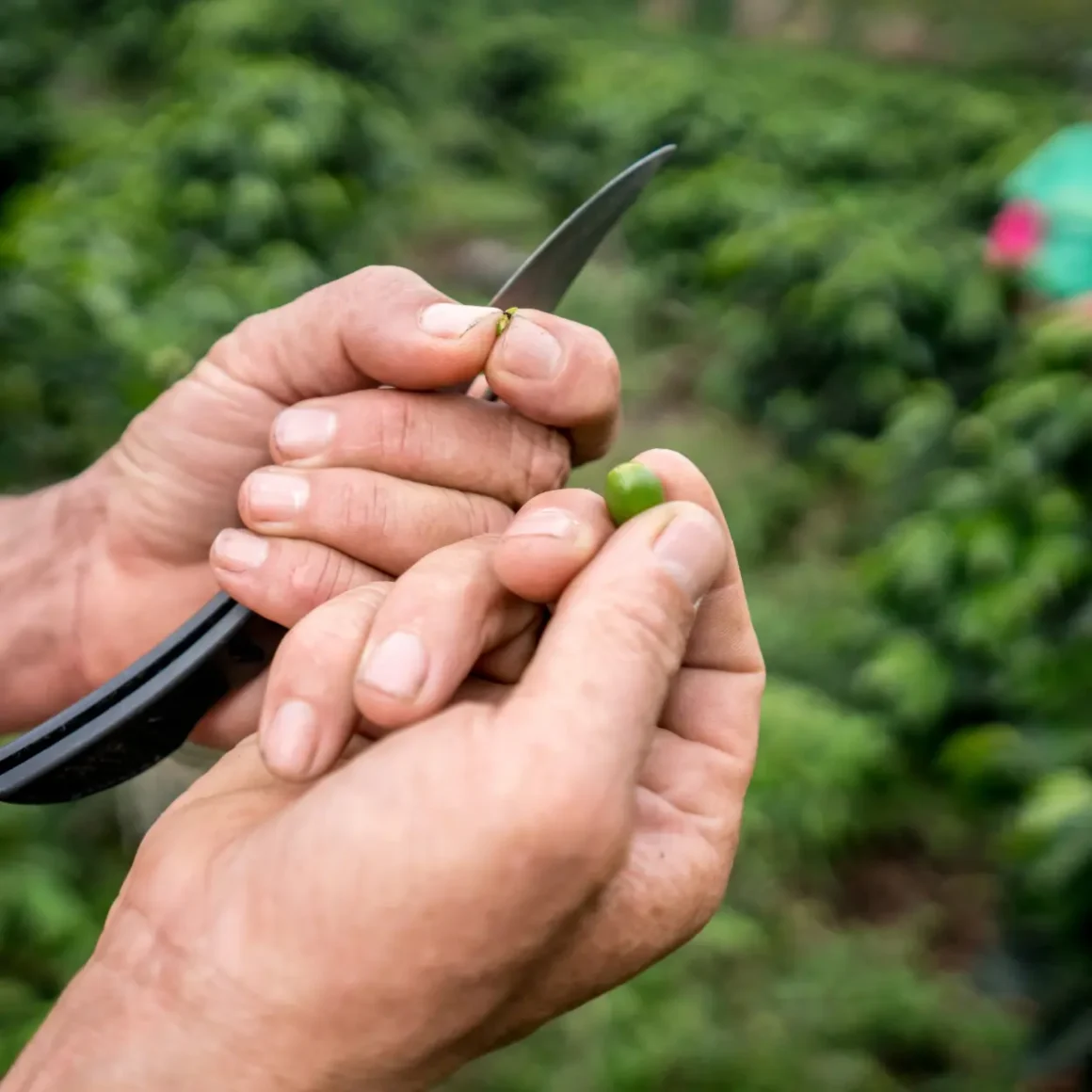
This fungal infection has profound economic implications, particularly in countries heavily reliant on coffee farming.
- Production Decline: Notable decreases in coffee production have been observed in various countries, notably in Central and South America, due to coffee rust epidemics. For instance, Colombia experienced a 31% reduction in its coffee harvest from 2008-2011. (4)
- Financial Impact on Farmers: The reduced harvest leads to substantial financial losses for coffee farmers. This, combined with the increased cost of combating the disease, puts a significant strain on their financial stability.
- Employment and Livelihoods: The decrease in production also leads to job losses for laborers, exacerbating food insecurity and diminishing the quality of life for many families in affected regions.
- Market Prices: A shortage in coffee bean production can cause a hike in coffee prices globally, affecting both the supply chain and consumer markets.
The economic repercussions of this fungal disease highlight the necessity for improved prevention and management strategies to safeguard the livelihoods of those dependent on coffee farming.
Environmental Effects
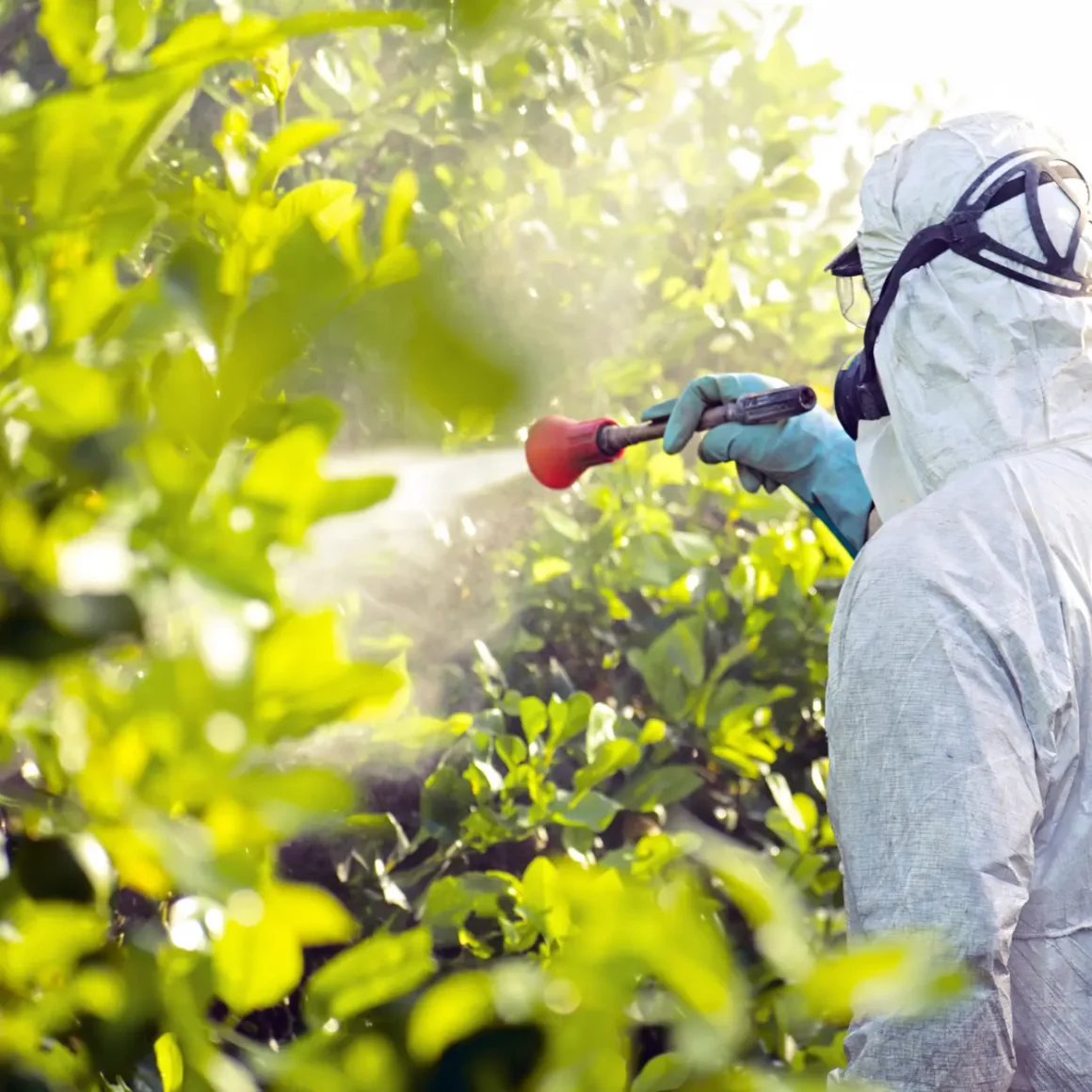
The environmental impact of this rust is notable, particularly in the ecosystems where coffee is a dominant crop.
- Biodiversity Shift: The potential shift from Arabica to Robusta coffee species due to their differing susceptibilities to this fungal infection could alter the biodiversity within these ecosystems.
- Pesticide and Fertilizer Use: Efforts to combat this type of rust often involve increased use of pesticides and fertilizers, which can have detrimental effects on the local environment and biodiversity.
- Soil and Water Quality: The extensive use of chemicals can lead to soil degradation and water pollution, impacting both terrestrial and aquatic life forms.
Addressing the environmental impact of this fungal disease is as crucial as tackling its economic consequences, requiring a balance between agricultural productivity and ecological preservation.
Coffee Rust’s Global Spread
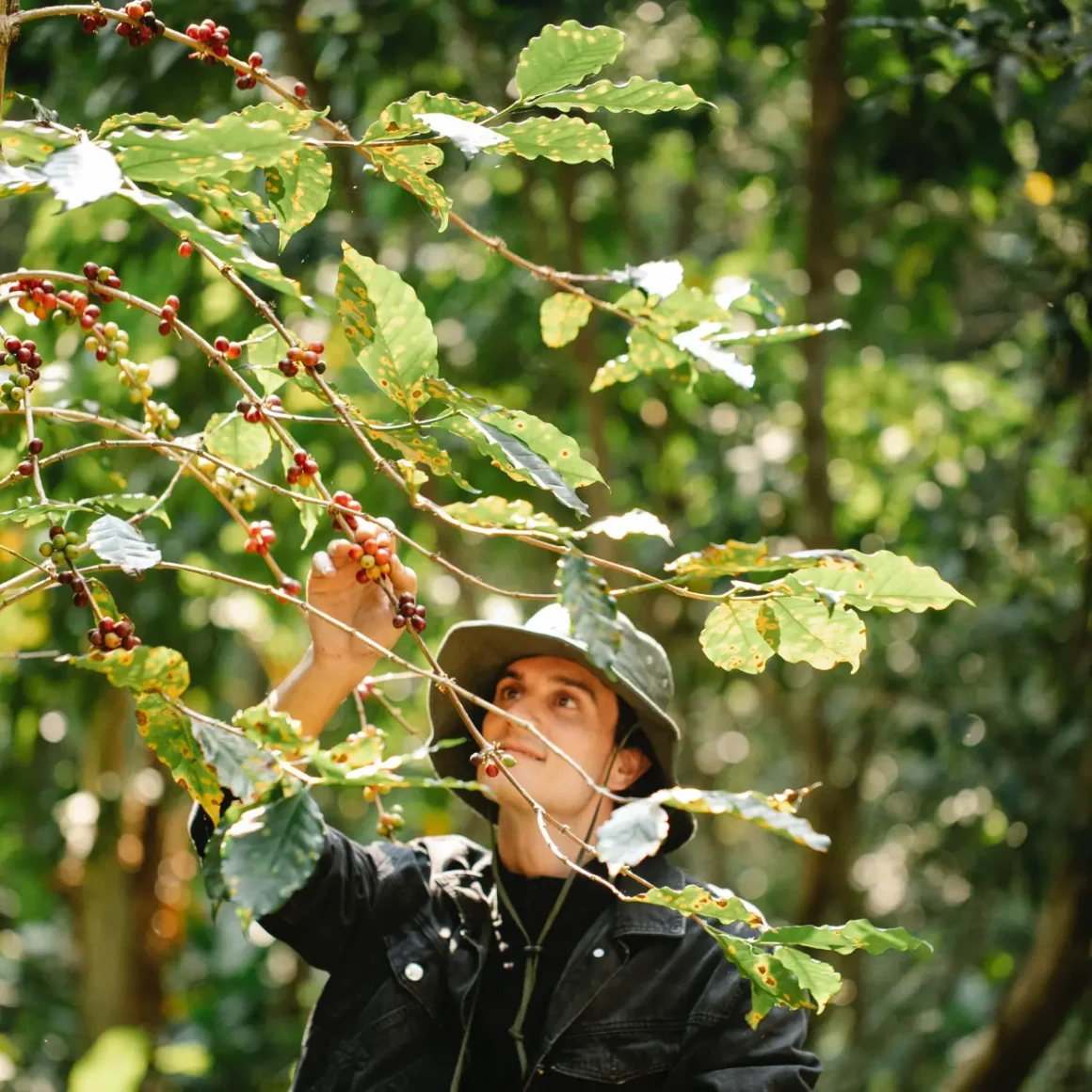
The global spread of this fungal infection poses a significant threat to the worldwide coffee industry.
- Regional Spread: The initial reports of coffee rust can be traced back to East African coffee trees near Lake Victoria in 1861, affecting a substantial portion of the world’s coffee production.
- Global Implications: As this rust continues to spread, its impact is not limited to the regions of origin but extends to the global market, affecting supply chains and market stability.
- Research and Prevention: The worldwide spread of this fungal disease underscores the importance of international collaboration in research and the development of effective prevention strategies.
The global nature of this rust problem necessitates a unified approach to research and management, aiming to protect the coffee industry and the millions of livelihoods it supports.
Understanding Coffee Rust Prevention
The prevention of coffee rust is an essential aspect of sustaining the global coffee industry. This debilitating fungal disease poses a significant threat to coffee plants, affecting both the yield and quality of coffee beans. Mitigating this disease involves a comprehensive approach that incorporates traditional methods, modern innovations, and sustainable farming practices. Each of these strategies plays a critical role in maintaining healthy coffee crops and ensuring the longevity of the coffee industry.
Traditional Prevention Methods
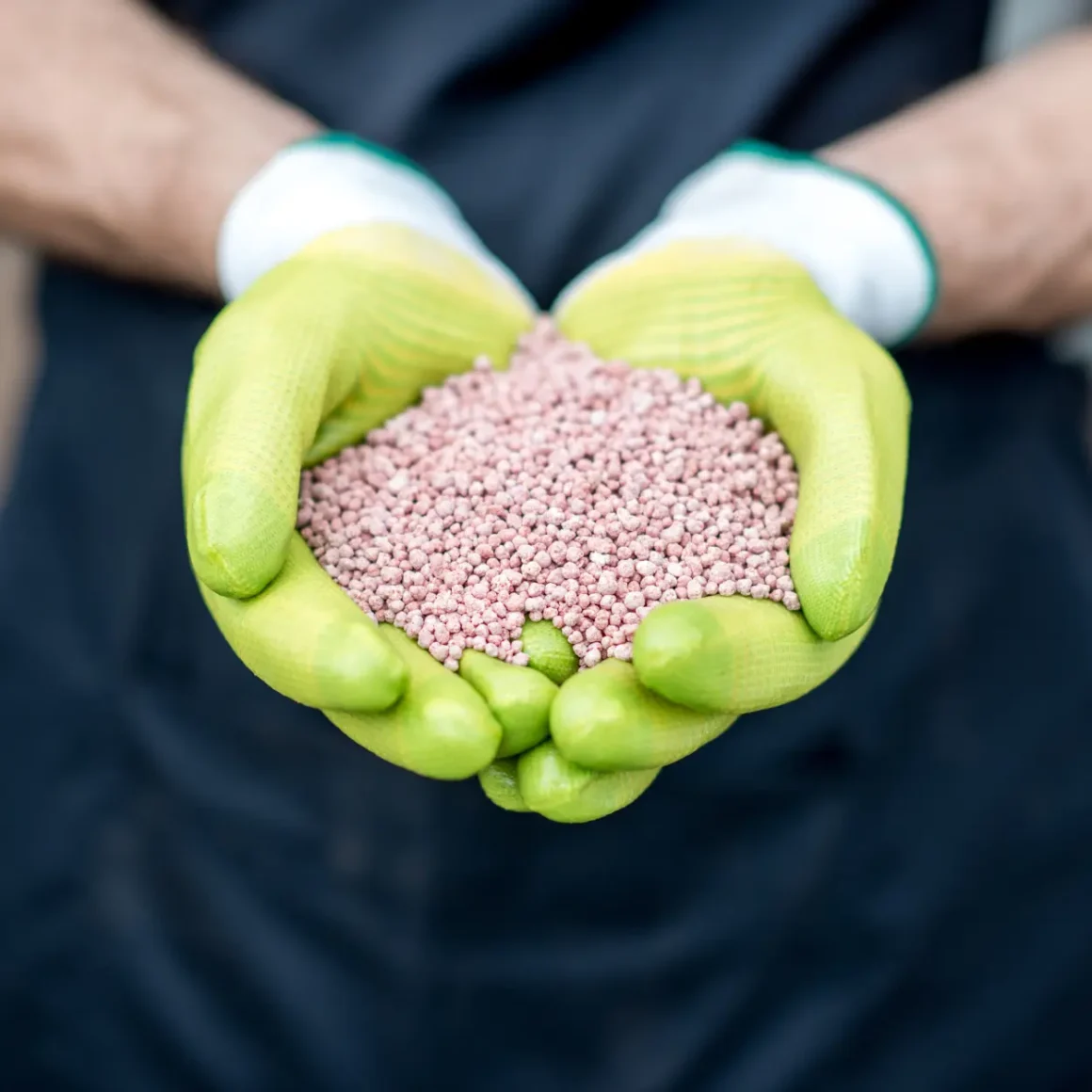
Traditional methods for preventing this rust focus on maintaining the overall health and resilience of coffee plants.
- Fertilization: The cornerstone of traditional prevention is robust plant health, achieved through proper fertilization. Fertilization ensures that coffee plants have the necessary nutrients to thrive and resist diseases. A well-nourished plant is less susceptible to infections like coffee rust, as its natural defense mechanisms are stronger.
- Use of Fungicides: Fungicides have been a traditional go-to solution for combating this disease. Copper-based fungicides, while effective, require careful handling to prevent environmental contamination and soil toxicity. Systemic fungicides, which are absorbed by the plant, offer an alternative but also come with their own set of environmental and health concerns.
- Moisture Control: Managing the microclimate around coffee plants is vital. Techniques such as pruning and weed control enhance air circulation around the plants, reducing the likelihood of prolonged leaf wetness—a condition favorable for fungal growth. Plant spacing is also crucial, as it helps in reducing the spread of the disease from plant to plant.
- Sunlight Exposure: Balancing sunlight exposure is another traditional method. While sunlight is necessary for drying the leaves and preventing fungal growth, too much sun can stress the plants. Thus, a well-managed canopy is essential to provide both protection from excessive sun and enough light for optimal growth.
Modern Techniques and Innovations

The battle against this fungal infection has led to modern innovations and techniques that aim to provide more sustainable and effective solutions.
- Arabica-Robusta Hybrids: Breeding Arabica with the more rust-resistant Robusta species has produced hybrids like Hibrido de Timor. These hybrids aim to combine Arabica’s flavor with Robusta’s resistance traits.
- Genetic Research: The advancement in genetic research has opened new possibilities in developing coffee varieties that are inherently resistant to this disease. Understanding the genetic makeup of coffee plants helps scientists identify and enhance traits that can naturally repel or withstand the disease.
- Quarantine Protocols: In regions like Hawaii, strict quarantine measures for imported coffee plants and adherence to hygiene practices help prevent the introduction of this rust.
These modern approaches, while promising, are part of an ongoing effort to find long-term, sustainable solutions to this fungal disease.
The Role of Sustainable Farming Practices
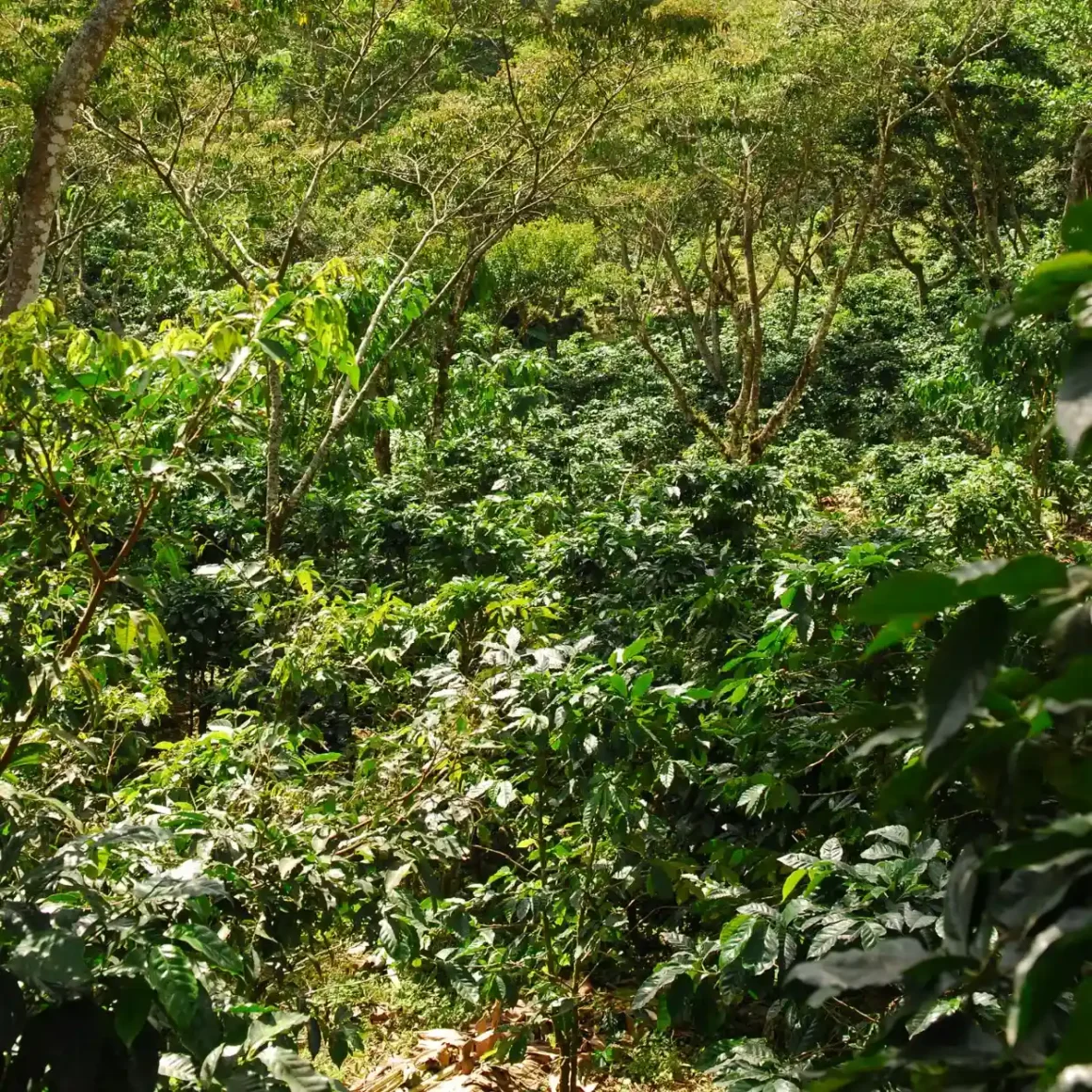
Sustainable farming practices play a pivotal role in coffee rust prevention and the overall health of coffee ecosystems.
- Integrated Pest Management (IPM): IPM represents a holistic approach to pest and disease management. It combines biological controls (like using natural predators), cultural practices (like crop rotation and selective pruning), and when necessary, chemical treatments in an environmentally conscious manner.
- Agroforestry: Integrating coffee cultivation with other plant species through agroforestry not only helps in controlling moisture but also enhances biodiversity, improves soil health, and creates a more resilient farming ecosystem.
- Community Education and Training: Educating farmers about sustainable coffee cultivation practices and effective prevention of this fungal disease can significantly enhance the resilience of coffee farms.
In summary, combating this fungal infection requires a multifaceted approach. While traditional methods focus on direct disease management, modern techniques offer innovative solutions through scientific advancements. Sustainable farming practices, on the other hand, provide a holistic framework that not only addresses coffee rust but also promotes the overall health and sustainability of the coffee ecosystem. By integrating these diverse approaches, the coffee industry can effectively tackle the challenge of this rust, ensuring stable production and the well-being of communities dependent on coffee farming.
Future Prospects in Fighting Coffee Rust
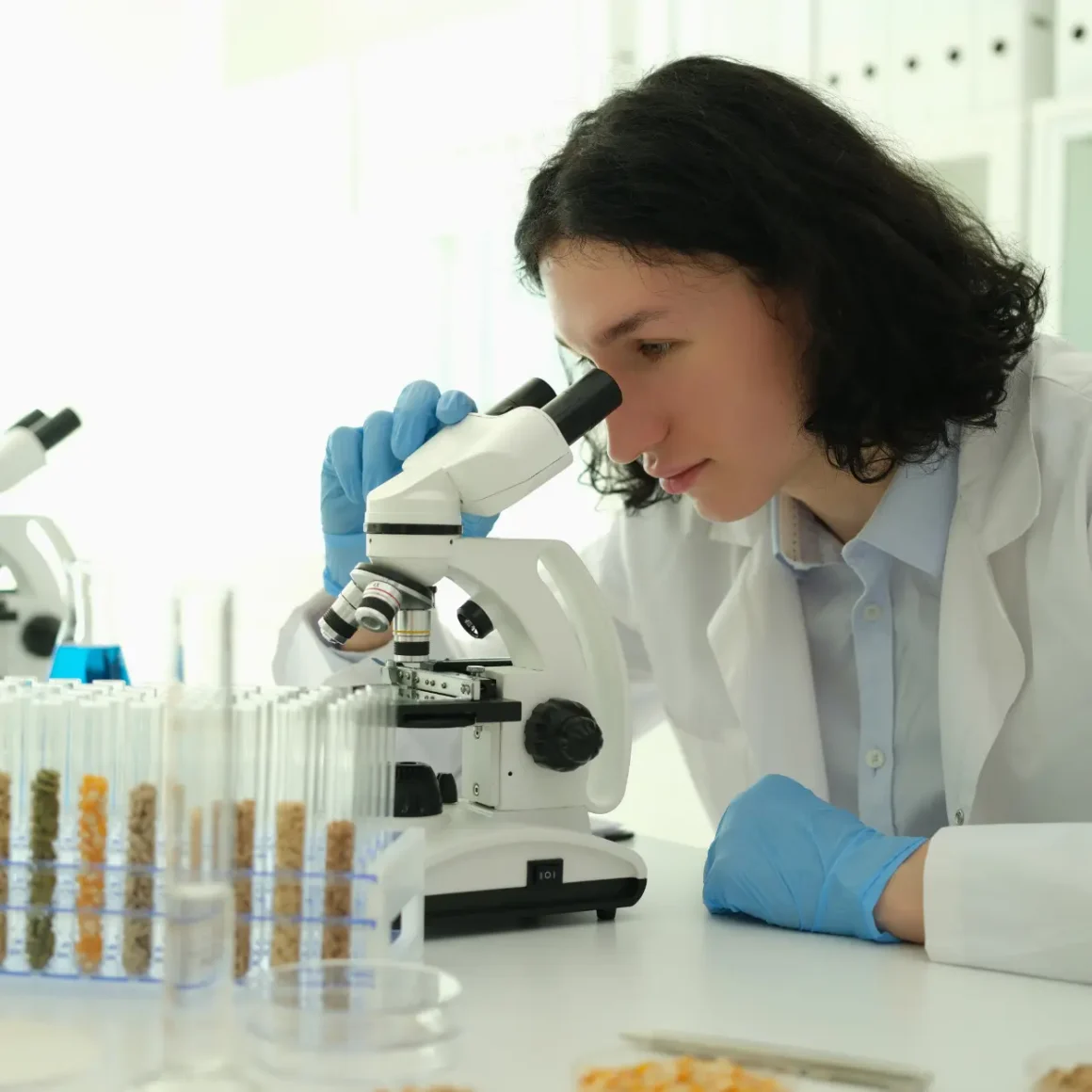
The ongoing battle against this fungal infection is a dynamic and evolving challenge. As we look towards the future, there are several promising avenues and initiatives underway that aim to strengthen the fight against this persistent threat. These efforts span from advanced research and development to addressing the implications of climate change and fostering collaborative efforts within the coffee industry.
Research and Development Initiatives
Research and development play a pivotal role in finding innovative solutions to combat this rust.
- Genetic Engineering: Scientists are exploring genetic engineering to develop coffee varieties with inherent resistance to this fungal disease. This could potentially offer a long-term solution to the problem.
- Advanced Fungicides: The development of more effective and environmentally friendly fungicides is ongoing. These new formulations aim to be more potent against the rust while minimizing ecological impact.
- Predictive Analytics: Leveraging technology like AI and machine learning to predict outbreaks and spread patterns of coffee rust can enable preemptive actions and more effective management strategies.
These research initiatives represent a critical investment in the future of the coffee industry, offering hope for more sustainable and effective methods to combat this disease.
Climate Change and Coffee Rust
Climate change poses a significant challenge in the fight against coffee rust, influencing both the spread and severity of the disease.
- Impact Assessment: Understanding how changing climatic conditions affect the proliferation of this fungal disease is crucial. Warmer temperatures and altered rainfall patterns can exacerbate the spread and intensity of infestations.
- Adaptation Strategies: Developing strategies to adapt coffee cultivation to changing climates is essential. This includes exploring varietals suited to new climatic conditions and adjusting agricultural practices.
- Mitigation Efforts: Efforts to mitigate the impact of climate change on coffee production are necessary. This includes soil conservation, water management practices, and exploring alternative agricultural models.
Addressing the interplay between coffee rust and climate change is critical for ensuring the resilience and sustainability of coffee production in the face of global environmental shifts.
Collaborative Efforts in the Coffee Industry
Collaboration across the coffee industry is key to effectively managing and combating coffee rust.
- International Cooperation: Sharing knowledge, resources, and strategies between coffee-producing countries is vital. International organizations and alliances play a significant role in facilitating this cooperation.
- Farmer Education and Support: As discussed earlier, providing coffee farmers with education, resources, and tools to manage this disease is essential. This includes training programs, access to resistant coffee varieties, and support in implementing effective management practices.
- Public-Private Partnerships: Collaborations between governments, private companies, and research institutions can lead to more significant advancements in this fungal infection management and provide the necessary funding for research and farmer support programs.
These collaborative efforts are fundamental to the long-term success of fighting this fungal disease, ensuring a sustainable future for the global coffee industry. By working together, the coffee community can develop and implement more effective strategies to safeguard their crops against this pervasive disease.
Conclusion
In the world of coffee cultivation, the threat of ‘coffee rust’, caused by the fungus Hemileia vastatrix, stands as a formidable challenge with far-reaching consequences. This guide offers an insightful exploration of what is coffee rust, detailing its nature, the science behind its spread, and its significant impact on the global coffee industry. It delves into various strategies for prevention and treatment, encompassing traditional methods, modern innovations, and organic approaches. The guide also examines the broader implications of this rust, including economic repercussions for coffee-producing regions, environmental considerations, and the influence of climate change on its proliferation. Additionally, it highlights the importance of collaborative efforts and research developments in the ongoing battle against this pervasive disease. This comprehensive article aims to provide a thorough understanding of Hemileia vastatrix and its global impact, offering valuable knowledge to coffee producers, industry stakeholders, and enthusiasts alike.
FAQ
What are the economic consequences of coffee rust?
This rust leads to reduced harvests, financial losses for farmers, job losses for laborers, and potentially higher market prices for coffee globally.
Are there any sustainable farming practices to combat coffee rust?
Yes, sustainable practices like integrated pest management, organic fungicides, and improving soil health are effective in combating this fungal disease
What are the latest innovations in coffee rust treatment?
Innovations include genetic engineering for rust-resistant coffee varieties and the development of environmentally friendly bio fungicides.
How is climate change affecting coffee rust incidence?
Climate change, with its altering temperatures and rainfall patterns, can exacerbate the spread and severity of this disease.
